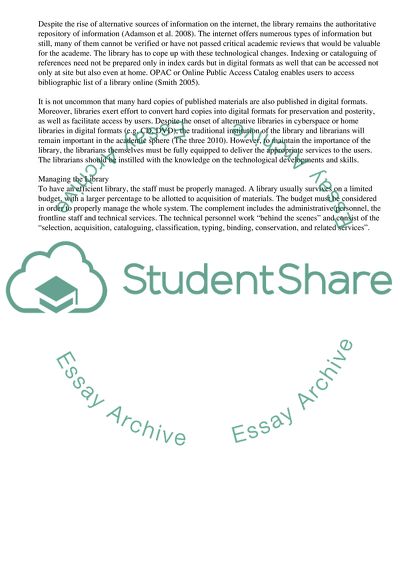Cite this document
(Specifics of Management in Libraries Coursework, n.d.)
Specifics of Management in Libraries Coursework. Retrieved from https://studentshare.org/management/1564419-managing-the-library-and-its-staff
Specifics of Management in Libraries Coursework. Retrieved from https://studentshare.org/management/1564419-managing-the-library-and-its-staff
(Specifics of Management in Libraries Coursework)
Specifics of Management in Libraries Coursework. https://studentshare.org/management/1564419-managing-the-library-and-its-staff.
Specifics of Management in Libraries Coursework. https://studentshare.org/management/1564419-managing-the-library-and-its-staff.
“Specifics of Management in Libraries Coursework”. https://studentshare.org/management/1564419-managing-the-library-and-its-staff.


